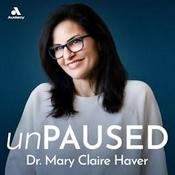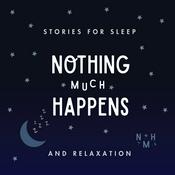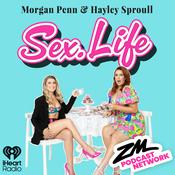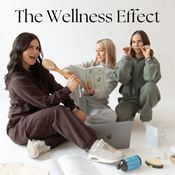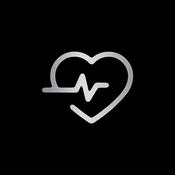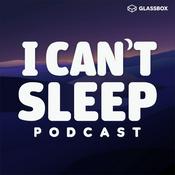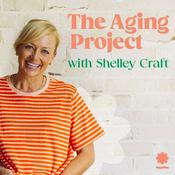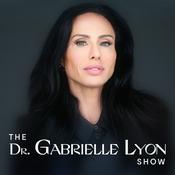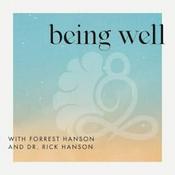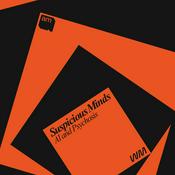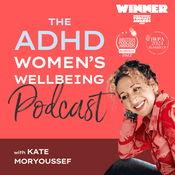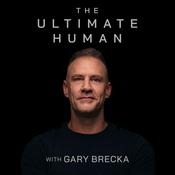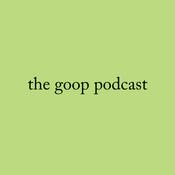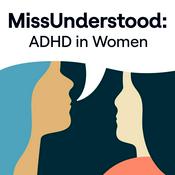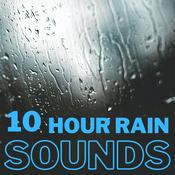Divergent Menopause (previously The Autistic Perimenopause)
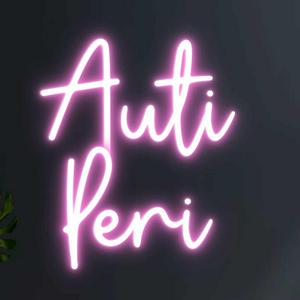
38 episodes

🎧 4: Can your creativity change as you change?
25/11/2025 | 21 mins.
Hello and welcome to Divergent Menopause, previously known as The Autistic Perimenopause: A Temporary Regression.I am Sam Galloway (she/her), an autistic ADHDer, and I have recently had a hysterectomy. As a neurodivergent perimenopause and PMDD survivor, I offer peer support and share knowledge on how to make it through the hard times.Thanks for joining me on this wild midlife ride! 🎢I am delighted to be joined again by Allegra Chapman (she/her) from Creative Fix in the final episode of Divergent Creativity in Menopause!Together Allegra and I have created this four part mini series on the importance of creativity during the menopause transition and beyond. 🎧 1) What is creativity is and why does it matter?🎧 2) How can creativity fit your needs?🎧 3) Can you be creative by accident?🎧 4) Can your creativity change as you change?In this fourth and final part we talked about: 💕 Creativity shifts as our needs change throughout fluctuating capacity in neurodivergent perimenopause and beyond. Our creative practices can adapt and may become slower, smaller, or look entirely different.💕 Creativity is a tool for unmasking and self-understanding. It helps us process our emotions (even when alexithymia makes them hard to name), recognise our needs, and navigate a world not built for neurodivergent, disabled or midlife women.💕 There is no “right way” to be creative. We don’t need to follow neurotypical or traditionally masculine productivity advice. Creativity can look like writing novels or doodling, resting, or simply daydreaming. Whatever works for you is the right way. Writing an autism adapted suicide safety planis creative because you’re thinking about what are your triggers,what do you need, and what needs to be on hand. And then also about havinga toolkit you know to keep you regulated, regulate your nervoussystem and then that that’s also creative to meet your needs. You don’t alwayshave to be doing something.Sam Galloway Further reading and resourcesAllegra’s inspiring book ‘Creativity is your self-care: 52 creative therapy exercises exercises to support your emotional wellbeing all year round’ is available to buy here!If you would like to immerse deeper into Allegra’s creative wisdom, you can sign up to her course, Divergent Creatives.The online programme to enable neurodivergent or disabled people to build a sustainable and joyful creative practice. If you’re a writer or artist who has more ideas than you know what to do with, but you struggle to finish things, or even to get started, then this course is going to help you get sh*t done!A group of autistic menopause researchers based in the UK and Canada invited creative submissions reflecting people’s lived experience of this often challenging life transition. They wrote a paper on the submissions called ‘Stepping into who I fully am: A creative exploration of Autistic menopause.’Creative exploration of Autistic menopause encouraged emotional catharsis, self-understanding, and activism/artivism. Autistic Community Researchers noted transcendent, almost “magical” dimensions of connecting with other Autistic people’s lived experiences. Our creative emancipatory approach enabled Autistic, multimedia responses which traditional research methods would not have elicited…… Traditional research methods have limitations in capturing lived experiences of the Autistic menopausal transition. In this study creative, multimodal, arts-based approaches enhanced understanding by capturing nuanced interpretations and meanings.The ability to communicate through creative submissions facilitated participants’ self-expression and they recognised the potential therapeutic value of the creative process, as a “remedy” for Autistic menopause related difficulties.This study adopted a novel approach to data analysis in which Autistic community researchers used creative, reflexive approaches to respond to arts-based submissions rather than relying on traditional academic methods.For both Autistic research participants and Autistic researchers, creative methods had the potential to act as a catalyst for activism, artivism, and self-actualisation, encouraging personal transformation and magical transcendence through a process of (to paraphrase one of our participants) “stepping into” who we fully are.Stepping into Who I Fully Am: A Creative Exploration of Autistic MenopauseAuthor(s): Mx Rose Matthews , Christine A. Jenkins , Margaret Janse van Rensburg, Miranda J. Brady, Rachel L. Moseley, Julie M. Gamble-TurnerPublication date (Electronic, pub): 27 June 2025This concludes our series, and we hope you have enjoyed it! Thanks so much again to Allegra for recording this great chat with me, and thanks also to you for reading and listening! Cheers,If Divergent Menopause has helped you feel seen, understood, or a little less alone, please consider becoming a paid subscriber. Your support helps me keep this space accessible, and funds time to create more honest writing, Q&As, and resources for our neurodivergent menopause community. Get full access to Divergent Menopause at samgallowayaudhd.substack.com/subscribe

🎧 3: Can you be creative by accident?
18/11/2025 | 11 mins.
Hello and welcome to Divergent Menopause, previously known as The Autistic Perimenopause: A Temporary Regression.I am Sam Galloway (she/her), an autistic ADHDer, and I have recently had a hysterectomy. As a neurodivergent perimenopause and PMDD survivor, I offer peer support and share knowledge on how to make it through the hard times.Thanks for joining me on this wild midlife ride! 🎢I am delighted to be joined again by Allegra Chapman (she/her) from Creative Fix in the third episode of Divergent Creativity in Menopause!Together Allegra and I have created this four part mini series on the importance of creativity during the menopause transition and beyond. 🎧 1) What is creativity is and why does it matter?🎧 2) How can creativity fit your needs?🎧 3) Can you be creative by accident?🎧 4) Can your creativity change as you change?In this third part we talked about: 💕 Taking natural seasonal items home to curate our own arrangements.💕 Finding beauty in dried flowers over fresh flowers these days as my skin and body become increasingly dry in menopause!💕 Noting down your accidental creativity using the downloadable sheet in this post from Allegra. It’s time to reclaim your creative nature and take note of just how much creativity you bring to the world without even realising it. Then, hopefully, you can give yourself permission to explore your creativity further, with more intention, and see where else it wants to take you!Allegra ChapmanWhat natural treasures can you find where you live?🍁🐚🌸Further reading and resourcesAllegra’s inspiring book ‘Creativity is your self-care: 52 creative therapy exercises exercises to support your emotional wellbeing all year round’ is available to buy here!If you would like to immerse deeper into Allegra’s creative wisdom, you can sign up to her course, Divergent Creatives.The online programme to enable neurodivergent or disabled people to build a sustainable and joyful creative practice. If you’re a writer or artist who has more ideas than you know what to do with, but you struggle to finish things, or even to get started, then this course is going to help you get sh*t done!A group of autistic menopause researchers based in the UK and Canada invited creative submissions reflecting people’s lived experience of this often challenging life transition. They wrote a paper on the submissions called ‘Stepping into who I fully am: A creative exploration of Autistic menopause.’Creative exploration of Autistic menopause encouraged emotional catharsis, self-understanding, and activism/artivism. Autistic Community Researchers noted transcendent, almost “magical” dimensions of connecting with other Autistic people’s lived experiences. Our creative emancipatory approach enabled Autistic, multimedia responses which traditional research methods would not have elicited…… Traditional research methods have limitations in capturing lived experiences of the Autistic menopausal transition. In this study creative, multimodal, arts-based approaches enhanced understanding by capturing nuanced interpretations and meanings.The ability to communicate through creative submissions facilitated participants’ self-expression and they recognised the potential therapeutic value of the creative process, as a “remedy” for Autistic menopause related difficulties.This study adopted a novel approach to data analysis in which Autistic community researchers used creative, reflexive approaches to respond to arts-based submissions rather than relying on traditional academic methods.For both Autistic research participants and Autistic researchers, creative methods had the potential to act as a catalyst for activism, artivism, and self-actualisation, encouraging personal transformation and magical transcendence through a process of (to paraphrase one of our participants) “stepping into” who we fully are.Stepping into Who I Fully Am: A Creative Exploration of Autistic MenopauseAuthor(s): Mx Rose Matthews , Christine A. Jenkins , Margaret Janse van Rensburg, Miranda J. Brady, Rachel L. Moseley, Julie M. Gamble-TurnerPublication date (Electronic, pub): 27 June 2025Next week Allegra and I will be sharing the fourth and final part of our podcast mini series with you. Have a great week!Cheers,Enjoying Divergent Menopause? Become a paid subscriber to support independent writing on neurodivergent midlife and menopause. Get full access to Divergent Menopause at samgallowayaudhd.substack.com/subscribe

🎧 2: How can creativity fit your needs?
10/11/2025 | 12 mins.
Hello and welcome to Divergent Menopause, previously known as The Autistic Perimenopause: A Temporary Regression.I am Sam Galloway (she/her), an autistic ADHDer, and I have recently had a hysterectomy. As a neurodivergent perimenopause and PMDD survivor, I offer peer support and share knowledge on how to make it through the hard times.Thanks for joining me on this wild midlife ride! 🎢“Care for your needs as a priority, rather than leaving them at the bottom of the list.”I am delighted to be joined again by Allegra Chapman (she/her) from Creative Fix in the second episode of Divergent Creativity in Menopause!Together Allegra and I have created this four part mini series on the importance of creativity during the menopause transition and beyond. 🎧 1) What is creativity is and why does it matter?🎧 2) How can creativity fit your needs?🎧 3) Can you be creative by accident?🎧 4) Can your creativity change as you change?In this second part we talked about: 💕 how societal expectations and internalised ableism combine to make us de-prioritise our creativity💕 giving ourselves permission to meet our needs, and pacing our creative endeavours around our menstrual cycles/menopause stage 💕 being unable to do our best creative work if we are in neurodivergent burnout.Everyday creativity can be free, low key and take place both in the home and out and about.Resources and further readingAllegra’s inspiring book ‘Creativity is your self-care: 52 creative therapy exercises exercises to support your emotional wellbeing all year round’ is available to buy here!If you would like to immerse deeper into Allegra’s creative wisdom, you can sign up to her course, Divergent CreativesThe online programme to enable neurodivergent or disabled people to build a sustainable and joyful creative practice. If you’re a writer or artist who has more ideas than you know what to do with, but you struggle to finish things, or even to get started, then this course is going to help you get sh*t done!Dr Samantha Newman AKA Female GP Monthly Cycling “Your menstrual cycle is a natural process made up of four key stages: Menstruation, Follicular, Ovulation, and Luteal. Knowing how these stages work helps you better understand your body and mind.”Kate Codrington Menopause facilitator, speaker and author (Moon and Menopause tracking)Red School Menstrual cycle and menopause awarenessA group of autistic menopause researchers based in the UK and Canada invited creative submissions reflecting people’s lived experience of this often challenging life transition. They wrote a paper on the submissions called ‘Stepping into who I fully am: A creative exploration of Autistic menopause.’Creative exploration of Autistic menopause encouraged emotional catharsis, self-understanding, and activism/artivism. Autistic Community Researchers noted transcendent, almost “magical” dimensions of connecting with other Autistic people’s lived experiences. Our creative emancipatory approach enabled Autistic, multimedia responses which traditional research methods would not have elicited…… Traditional research methods have limitations in capturing lived experiences of the Autistic menopausal transition. In this study creative, multimodal, arts-based approaches enhanced understanding by capturing nuanced interpretations and meanings.The ability to communicate through creative submissions facilitated participants’ self-expression and they recognised the potential therapeutic value of the creative process, as a “remedy” for Autistic menopause related difficulties.This study adopted a novel approach to data analysis in which Autistic community researchers used creative, reflexive approaches to respond to arts-based submissions rather than relying on traditional academic methods.For both Autistic research participants and Autistic researchers, creative methods had the potential to act as a catalyst for activism, artivism, and self-actualisation, encouraging personal transformation and magical transcendence through a process of (to paraphrase one of our participants) “stepping into” who we fully are.Stepping into Who I Fully Am: A Creative Exploration of Autistic MenopauseAuthor(s): Mx Rose Matthews , Christine A. Jenkins , Margaret Janse van Rensburg, Miranda J. Brady , Rachel L. Moseley , Julie M. Gamble-TurnerPublication date (Electronic, pub): 27 June 2025It is a pleasure to continue sharing my conversation with Allegra with you. I hope you are enjoying it, and that you are able to fit some crucial creativity around your current needs and within your fluctuating capacity. Cheers,If you enjoy these posts and want to fuel more of them, think of a paid subscription like buying me a coffee each month. It’s a small gesture that makes a big difference to keeping Divergent Menopause going strong. Get full access to Divergent Menopause at samgallowayaudhd.substack.com/subscribe

ADHD Meets Menopause: A Volatile Mix
05/11/2025 | 27 mins.
Hello and welcome to Divergent Menopause, previously known as The Autistic Perimenopause: A Temporary Regression.I’m Sam Galloway (she/her) and I am an AuDHD woman ten weeks into surgical menopause (hysterectomy).If you are interested about why I needed the surgery, you can read more here.Thanks for joining me on this wild midlife ride! 🎢October was World ADHD Awareness Month and World Menopause Awareness MonthAs you are here, chances are that you are already aware of both Attention Deficit Hyperactivity Disorder (ADHD) and menopause. I wish I had known about them sooner… but better late than never. We still don’t know enough about how the two intersect, but early research suggests that hormonal flux in neurodivergent brains and bodies may be suboptimal for our mental and physical health. To say that perimenopause sent me absolutely batshit cray cray would be a gross understatement. Why is awareness still the goal in 2025? Acceptance and gold standards of care should be where we are already at. Yet awareness it must be, since many of us have friends, family members and even healthcare teams who are not yet aware of the potential for volatility during the neurodivergent menopause transition. Why is ADHD affected by hormonal flux? Well, we don’t know yet. But Behrman and Crockett explain in their 2024 research paper, Severe mental illness and the perimenopause, that:Executive dysfunction and other cognitive problems are commonly reported during the perimenopause; these which can appear very similar to the constellation of symptoms seen in attention-deficit hyperactivity disorder (ADHD)32 and, like ADHD, can respond to stimulants.33 It is unclear whether this is an unmasking of underlying pre-existing ADHD or entirely de novo symptoms. Given the overlap, it can be hypothesised that those with pre-existing ADHD may experience a worsening of their ADHD symptoms with perimenopause, and it has been shown that people with comorbid ADHD are also more vulnerable to perimenopause-associated psychological symptoms.34There is much hypothesising in the field, whilst those of us deep in the trenches are falling daily on the battlefield. We may not know why menopause is such a challenging transition for many neurodivergent people, but we need to be alert to the risks. This is not a “Yay for ADHD !” article. Yes, there are advantages to having this condition, as there are also disadvantages. My ADHD wasn’t diagnosed until I was 39 - two years after my later in life autism diagnosis. I thought naively that by 40 I had all the answers, and would be able to live my best years going forward. I could not have been more wrong!I was only too glad to finally be aware of my neurotype, yet awareness is only the beginning. Forty five minutes into my hour long Zoom consult with an Auckland-based psychiatrist, my ADHD assessment was over and it was a done deal. He diagnosed me with ADD (which is an out of date diagnosis now, but whatevs). He hung up and spent the remainder of my allocated session writing up notes for my diagnostic report and filing the pharmaceutical admin to process the special authority number required for me to trial controlled stimulant drugs. Meanwhile, I sat alone in floods of tears weeping for Little Sam who had never stood a chance. Tears are welling up now (or trying to) in my menopausally dry eyes just from thinking back on it.As an AuDHDer (autistic and ADHD), I have learnt the long and hard way that the impact ADHD can have on our menopause transition can be catastrophic, isolating and feel deeply shameful.1 in 4 ADHD women have attempted suicide. Things are already hard for us during times of hormonal flux but we often make exceptions for people’s hormonal changes in puberty, pregnancy, postpartum and during menstrual periods and premenstrual dysphoria disorder (PMDD). Menopausal people also need accommodations and support. Knowing what to expect is crucial in then dealing with it. You aren’t broken and you don’t need to be fixed. You are enough and not too much. You deserve acceptance not awareness.To save you the time and energy on obsessively compulsively meticulously researching characteristics of adult ADHD, and the implications perimenopause has on ADHD, I am here to share the low highlights in no particular order:* It’s not called ADD (attention deficit disorder) anymore. ADD is no longer diagnosable. There are three types of ADHD: hyperactive, inattentive, and combined type. Combined means you are both hyperactive and inattentive.* Lagging skills versus inability. Neurodevelopment is slower for us. Immature behaviour and executive dysfunction do not determine intellect, regardless of our age. Remember that you have strengths. Play to them when and where you can. * You might see ADHD in your kids - especially boys - first, because their external hyperactive symptoms can manifest as “disruptive” in the classroom, and the teachers want to shut them down support them. * Your energy is exceptional and feels abundant, but you can crash hormonally. We can’t run on empty. Those of us who are exceptionally sensitive to hormonal flux will know all too well that we have had “good weeks” and “bad weeks” in our menstruating years. When those changes are catastrophic, it may indicate that we have premenstrual dysphoria disorder (PMDD). Previous patterns of mental health implications caused hormonally such as during menses, menstruation, pregnancy, postpartum, during IVF treatment etc. are indicators of future challenges during perimenopause. * Hyperactivity can be cerebral, not always physical. Overthinking, anxiety, rumination, sleep issues, scripting phone calls, imagining other worlds and embarking on new and illicit relationships in your head are allways it can manifest. We create these elaborate situations in our minds because our physical surroundings are understimulating or triggering. What’s more interesting than deciding what to cook for dinner yet again? Alternative lives, sliding doors, reimagined reality. When we are externally presenting as inattentive often it’s accompanied by internal hyperactivity which means that we are often combined type, even when diagnosed ADD, as I was. * Inattentiveness can be painful and shameful. We aren’t mishearing and daydreaming on purpose to annoy others - although they rarely see it that way. Part of the assessment process for ADHD includes presenting our old school reports to inform the diagnostic process. Proof that we have always been considered not good enough. Annually and without fail my end of year reports read, “Must try harder. Could do better. Not reaching potential.” Yet nobody in a classroom is trying as hard as a girl/AFAB who is endlessly having to suppress her rich and stimulating inner world and pass for normal.* People will tell you you’re wrong about ADHD, especially those with the least amount of experience or knowledge about it. They won’t want you to talk about it with them so, unless it is imperative to the safety of yourself or someone else, don’t waste your finite energy. Find your neurotribe, because they may want to talk about nothing else, and we can all geek out together on the wonders of being neuromagnificent! ⭐️* We see ADHD in others, usually long before they wish to accept it. They refuse the label, as if you are branding them like cattle, or trying to insult them. Bide your time, realisations can take a while and denial is real. Try to protect your own rejection sensitivity dysphoria (RSD) being triggered when they seem supportive of you being ADHD, yet when it comes to their own identity they are appalled at the suggestion. * RSD is painful and overwhelming. Rejection sensitivity occurs when we have been rejected, insulted, gaslit, dismissed or any manor of things by someone, whether they did so intentionally or not. We can really stew on it, and then be consumed by it. It feeds our negativity bias and need for cerebral stimulation until we have broken ourselves. I have found the best way to manage this is to recognise it, and stop myself from spiralling. Do what you can to stop building on the idea that you have been slighted. Even if they meant to upset you, screw them. Instead you can: stim, listen to a favourite song that uplifts you and takes you to another time or place, journal it then burn the page, get outside. As I was writing this around Halloween, you may also like to curse them and/or make a voodoo doll and inflict pain on them. Whatever you do, keep it short then move on. If it comes up in your head again, tell yourself you have already dealt with it, and that it is just the hungry RSD looking for your attention. * Boredom is our kryptonite and our brains will do anything to avoid it.* Hyperfocus can be productive or not, and it is hard to channel it. Unless it is harming someone, once you get into flow, lean into it. Hyperfocus is a beautiful process and don’t feel bad if you don’t end up with a completed project at the end. Just go to the toilet, drink some water and have something to eat, because you are likely to have forgotten that the concept of time exists, and that you live in human bodily form. * So-called hard things are easy for us: entrepreneurship; picking up and dropping new hobbies and interests as though our lives depend on it; changing careers; earning multiple degrees; pulling all nighters; spotting neurodivergence in others. These are not superpowers though, and we should not be made to excel beyond our capacity to meet other people’s expectations. Exploiting neurodivergent people’s strengths whilst ignoring our struggles puts us at risk of burnout and abuse.* So-called easy things are hard for us: sensing the passage of time, and thus punctuality; booking appointments; small talk; meal planning; remembering to take the meds that help us do all of the above. Basically anything requiring executive functioning can become increasingly difficult in perimenopause, not helped by increasing midlife demands of parenting, caring for ageing parents, managing a household, employment and so on. * Now/not now. Having no sense of time is a common issue. Rather than feeling time pass, I know I either need to do the thing in my calendar now or not now. Dopamine elicited from extreme time pressure is a huge motivator for me, which is why I am finally finishing this article that I intended to publish “for the start of October” a week into November. Time is but a social construct. Again: better late than never…* Dopamine isn’t always scrolling. Impulsivity means we often get caught speeding or we may overspend (I did both cyclically throughout my twenties). Not thinking through the longer term consequences of our actions is pretty common. When things feel bad, it feels like they’ll never change. Is this why our suicide rate is so high? 1 in 4 women have attempted suicide, and I worry that this is too often down to extreme impulsivity driven by hormonal flux.* Hormonal flux can drive us downhill rapidly, so be prepared. Some people are sensitive to changing hormone levels - the ups and downs - rather than the levels themselves. Prior to my chemical menopause and now my surgical menopause, my mood, executive functioning and capacity dropped faster than I could sense any internal changes. Rage would escape me unprovoked. Masking was impossible. I couldn’t recognise who I was any more in those moments and within a few short years I had become a husk of my former self.* ADHDers are rescuers. We can also be naive, easily taking advantage of, trusting and gullible. As change makers and trailblazers, we think we can change others too. We may hone in on a wrong’un and believe we are able to save them from themselves. Sometimes this can end up with us becoming abused, bankrupt and at risk. * A special interest/hyperfocus can be a person. We can be obsessed for an unknown length of time and all in our head, until it burns out and we are no longer interested. We may then never talk or think about that person ever again.* Object permanence. We aren’t vindictively ignoring loved ones, but out of sight means out of mind. We can forget people we have known for years even exist. That upsets us as much as it upsets them. If only we had the executive functioning to print, frame and hang photos, seeing their faces might jog our memory…* Can OCD (obsessive compulsive disorder) mask ADHD? Does hyperactivity plus productivity equal OCD? I’m jealous of ADHDers who also have just enough OCD to keep everything clean and tidy and be consistent. Without that I live in clutter, hoarding and tripping over my own stuff, yet remain unmotivated and disinterested in picking it all up. Add in two neurodivergent kids who take after me, and it’s a wonder we can walk around our home at all! Goblin mode is real. It’s not laziness, it’s different priorities, lagging executive functioning skills and an inability to motivate and mobilise myself. Stimulant medication helps with all of that to some degree, in my case.* We can be introverted or extroverted, and we will often appear to oscillate between the two. How much of this is masking versus exhaustion? ADHD can be an energy mismatch. Imagine yourself entertaining and running around at home looking after everybody (unless you get hit by a car and get to spend Christmas with your feet up, as I did last year), then you’re exhausted when everyone wants to go out and they wonder why you don’t want to go. You have enabled everyone else to rest, chat and chill whilst you have burnt yourself out. Just say you have a migraine and wave them off at the door. Surely you are due a good solo doom scrolling session now to re-boot? Enjoy!* When we can make it out of the house, we are first to read the room. We are instinctive and perceptive about events and behaviours before anyone else feels it. We may want to leave before everyone else does when things feel too intense. In our youth, and even into midlife, we might stay out and self-medicate with booze, drugs and/or chocolate fountains to dampen the sensory overload and stress. These are understandable ways of masking and self-soothing, but can be hard habits to break long after they stop serving us. If they ever did.* Sensory processing disorder (SPD) co-occurs strongly with ADHD, autism and other forms of neurodivergence. This can be tricky to self-identify because we mask so strongly and have decades of unlearning uncomfortable compensatory habits. Sensory seeking and sensory avoiding shapes our world view and capacity to go out into an uncontrollable world. Squinting in bright rooms because we were told wearing sunglasses indoors made us weird, and getting told squinting is weird, and no it’s not too bright. Sticking our fingers in our ears during fireworks displays, being scared of balloons popping at parties and dogs barking (just me?). Swigging cod liver oil from the bottle in my Nan’s cupboard because I sought out strong flavours. You know, normal stuff. 👀Do yourself a favour and read up on sensory processing difficulties and challenges, which includes interoception and proprioception (see below). If it is accessible to you, work with a neuro-affirming occupational therapist to create a personalised sensory diet, where you include movement snacks and tools such as weighted blankets, safe foods, noise cancelling headphones etc. on hand to regulate your sensory inputs. If it is inaccessible to you, then take a look on YouTube for ideas. * Interoception refers to interpreting our inner states such as hunger, thirst, pain etc. Some of us have heightened interoception and may feel pain to an extreme, whereas someone with a reduced interoception may report having a high pain tolerance. Sometimes we may not be aware of our interoceptive states, especially whilst we are in hyperfocus mode. To buffer this, it can be useful to set timers to remind us when to eat, go to the bathroom and drink water. Visual prompts are also useful, such as keeping snacks and your water bottle next to you. * Proprioception refers to interpreting our movements, force and position in space. Have you ever had days where you feel like you walk into every possible obstacle, even when you see them? (No, just me again?) Or sometimes you drop your cutlery whilst using it? Or your cat bites you because you are stroking them a bit harder than usual? Sometimes we can feel a bit off during the luteal phase (after ovulation until the bleed starts) of our menstrual periods, and that can stretch out into perimenopause and beyond. Chances are you are not imagining it, and that hormonal flux is affecting your mind and body in ways you didn’t think possible. You might feel like you are literally losing your grip on life, as well as losing your mind. * Menopause is here to show us that we matter - we did all along - but now we can channel our energy into ourselves. I know how scary it is to not feel like yourself any more, to have spiralling cognitive limitations and to think these changes are irreversible. They aren’t, and you will adapt to them, learn new accommodations and, I am assured, come out the other side post-menopausally realising that pre-perimenopause, you were dealing with too many responsibilities, were people pleasing to the max, and put your own needs at the bottom of the list, if at all. * Your brain fog is hormonal, not dementia. There are similarities in symptoms between hormonal brain fog and young onset dementia and, if you are like me, you are likely to make the leap to assume you are on a path of cognitive decline. Neurodivergent people experiencing hormonal flux and decline often feel like they are losing self-care and communication skills. If you are worried about perimenopause, menopause and dementia, you might like to read more here.* Stimulant medications have been shown to help with brain fog in new onset executive difficulties in menopause. For those of us who become overtly symptomatic of ADHD around midlife, trialling stimulants - the first line treatment - may be beneficial. However, access to psychiatric assessment is a major prohibitive factor. * Stimulant medication works for 70 to 80% of ADHDers. Many people find them life changing. They are the most effective medication available in all of psychiatry. It’s now believed to rewire neural pathways and strengthen executive functioning skills longer term, rather than only having the short term effects previously thought of. Here is an informative discussion on ADHD medications.* Non-stimulants can be prescribed whilst awaiting an assessment for ADHD. You will need a doctor who is confident that you present as ADHD based on their professional evaluation in order to trial non-stimulants prescribed off-label. This is useful when a diagnosis is inaccessible, or you are struggling whilst on a long waiting list for assessment. Non-stimulants are the second line treatment for ADHD, and many people who don’t tolerate stimulants do well on them.* All is not lost. Other things that can optimise our executive functioning in challenging times include coaching, body doubling, energy management, pacing and lifestyle factors such as improving sleep. That last one is sometimes the hardest of all, and insomnia can be an early symptom of perimenopause. Often though, ADHD medication and/or HRT/MHT are needed first to boost your executive functioning, energy levels, sleep and mood before lifestyle changes can be made.* Hormone replacement therapy (HRT) can provide a buffer. HRT is not a great name since replacing hormones in most people’s case is not the goal, which is why a preferred term for it is menopause hormone therapy (MHT). Rather, HRT/MHT can provide a buffer to support you from hormone levels dropping so low whilst in flux that they cause unbearable symptoms. Transdermal hormones are safe for most people, and life saving for many. When used alongside other necessary medications and lifestyle optimisation, you can begin to feel like your former self again. Whilst many neurotypicals shout on the socials about how they went from a perimenopausal wreck to a goddess in 24 hours, that is not often the case for those of us who are hormonally sensitive and/or complex. Re-saturating oestrogen receptors (which are located in the brain and every part of the body, which is why menopause symptoms are widespread) can take some time. It is not a miracle cure. HRT/MHT needs tweaks and adjustments to dose and delivery system (e.g. patches, pills, gels or pessaries) under the guidance of a knowledgeable and neuro-affirming menopause doctor. * Taking medication for ADHD and HRT/MHT for menopause isn’t weakness. A so-called natural approach isn’t optimising what your brain can do for itself. We won't receive medals for getting through neurodivergent menopause without appropriate supports, and too many of us don’t make it through alive. We need an individualised toolkit to survive intact, complete with knowledgeable healthcare providers, self-advocacy skills and a network of people who understand, empathise and want to help us. More on self-advocacy and finding the right doctor for you here.What nuggets of wisdom can you share that may benefit us all? I would love to read them in the comments!Click on the ‘view in browser’ at the top of your email and log in if you haven’t already.Behrman and Crockett conclude in their 2024 research paper, Severe mental illness and the perimenopause, that:Discussion of symptoms through the prism of the perimenopause may be helpful for patients in understanding their experiences, and lifestyle advice may help with symptoms, which will have a positive impact on mental and physical health; the same is true for new presentations of perimenopause-related mental health difficulties. If oestrogen levels are balanced with HRT, patients are likely to respond more consistently to medication, perhaps requiring lower doses or less complex regimes and ultimately enjoying better physical and mental health outcomes.Hang in thereYou are already doing your best and, yes, you are good enough! Even when it all feels too hard and all the jobs are unsurmountable, give yourself credit for keeping on keeping on. Then take a break because, if neurodivergent menopause has taught me anything, it’s that most of the expectations placed on me aren’t worthy of my time and energy. So go and have a rest. All $hit good things come to an end, including perimenopause. And thank f$ck for that.Resources, Further Reading and Listening* Professor Russell Barkley’s two episodes (#199 and #200) on the I have ADHD podcast * ADHD for Smart Ass Women podcast* Jessica McCabe’s How to ADHD YouTube channel* Kate Moryoussef’s podcast and webinars https://www.additudemag.com/webinar/adhd-burnout-chronic-stress-women/* ADDitude magazine online and webinarsDivergent Menopause is on a mission to empower, educate and reframe the narrative. Want to support me? The best way is to become a paid subscriber. Your support means the world to me! Get full access to Divergent Menopause at samgallowayaudhd.substack.com/subscribe

🎧 1: What is creativity and why does it matter?
04/11/2025 | 12 mins.
I am delighted to be joined by Allegra Chapman (she/her) from Creative Fix!Together Allegra and I have created this four part mini series on the importance of creativity during the menopause transition and beyond.1) What creativity is and why it matters,2) How to fit it in around needs and what activities work for different needs3) Special interests and “accidental” creativity and stuff that’s creative that you don’t think about4) How your creative practice changes as your needs change... or how creativity can help with unmaskingResources:https://www.scienceopen.com/hosted-document?doi=10.13169/intljofdissocjus.5.1.0004Allegra’s bookAllegra’s coursePrevious articles by Allegra? Get full access to Divergent Menopause at samgallowayaudhd.substack.com/subscribe
More Health & Wellness podcasts
Trending Health & Wellness podcasts
About Divergent Menopause (previously The Autistic Perimenopause)
Listen to Divergent Menopause (previously The Autistic Perimenopause), Happy Place and many other podcasts from around the world with the radio.net app

Get the free radio.net app
- Stations and podcasts to bookmark
- Stream via Wi-Fi or Bluetooth
- Supports Carplay & Android Auto
- Many other app features
Get the free radio.net app
- Stations and podcasts to bookmark
- Stream via Wi-Fi or Bluetooth
- Supports Carplay & Android Auto
- Many other app features


Divergent Menopause (previously The Autistic Perimenopause)
download the app,
start listening.






